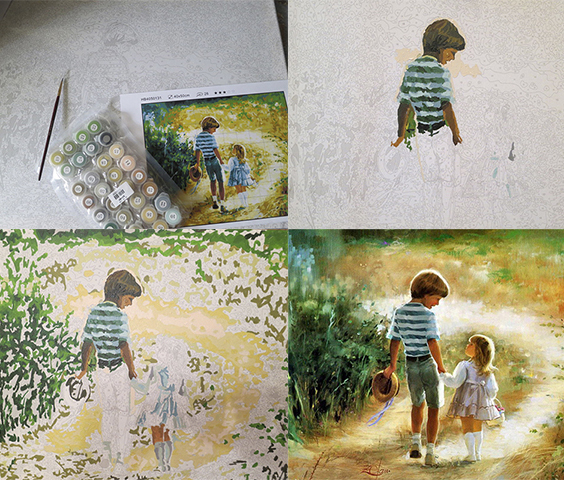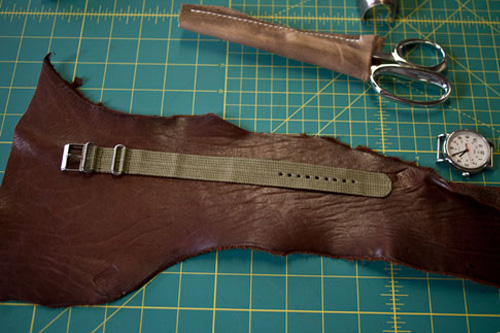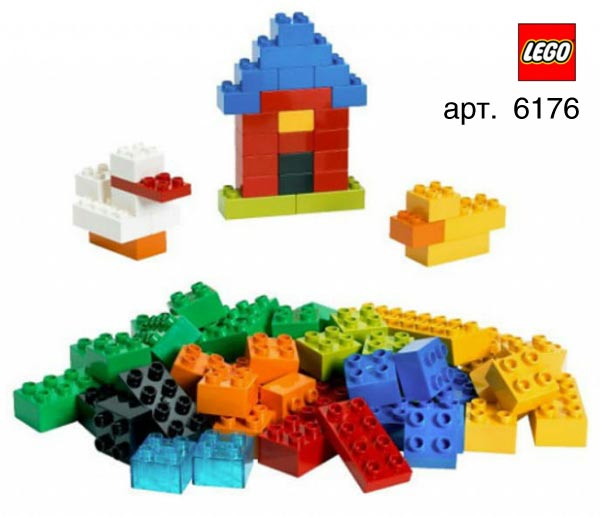Paint by Numbers - Tips, Techniques and Tricks for Coloring
"Anyone can become an artist!" - Today this motto is more relevant than ever. Yes, yes, do not be surprised, in our time, anyone can feel like an inventive Leonardo da Vinci or an expressive Van Gogh. After all, it used to be that in order to paint your canvas, you had to study at an art school for years or, at least, finish expensive drawing courses. And everyone, regardless of gender and age, can create their own still life, portrait or landscape in just 3-5 days - just like a real master exhibiting in famous galleries.
What is the reason for this phenomenon? In paintings by numbers, which are gaining more and more popularity in the 21st century. After all, they allow to reveal the creative potential of everyone who craves it, even if they do not have enough experience or free time.
Drawing on the principle of "all inclusive"
What is especially nice, any kit for home painting already includes everything you need: numbered jars of paints, one or more brushes, instructions, a checklist for checking shades, divided into sectors and marked with numbers cardboard or canvas with a stretcher, varnish mixture and wall mounts for the finished painting. You can start creating right away! But first, you should choose the desired basis for the picture and get acquainted with life hacks for coloring.
Cardboard vs canvas


Experienced painters by numbers believe that it is worth starting with cardboard. After all, this material is very cheap, but at the same time it is able to absorb excess paint applied to it, which is important for beginner artists. But the cardboard does not give the paintings the texture and “realness” that the canvas gives: a little rough to the touch, already primed and stretched on a real stretcher. Canvas, in turn, is available with a monochrome numbered outline or color. The last type of canvas is suitable even for the elderly and visually impaired, as well as children, because. coloring becomes intuitive. It is better to start with small formats and understandable subjects: animals, fish, birds, landscapes, nature or flowers. But it is worth moving on to drawing people, angels, icons or complex architectural structures after mastering the basic techniques of number painting.
With or without rules?
Of course, contemporary art no longer has clear “do's and don'ts” instructions, and the rules of contemporary art exist solely to be broken. But for this you need to know at least a little, and therefore, before you start unpacking the treasured box with canvas and paints, you should study the Internet encyclopedias in order to learn or refresh the concepts of light and shadow, line and shading, perspective and plane, front and background, color separation and contrast…
And if you are still a beginner and do not have experience in creating paintings by numbers, then it is better to follow the instructions that are in each set exactly. And when you master the basic techniques of this kind of painting, you can already work out the baggage of your techniques and chips. Moreover, there are not so many basic techniques that greatly facilitate drawing.
"Magnificent Four" methods of coloring pictures by numbers
There are 4 principles of canvas painting. You will memorize them without difficulty, because they are unusually logical and functional, they are already prompted by common sense and convenience to anyone who paints.
From light to dark
By painting over white, yellow, blue or pink areas at the very beginning, you will avoid accidental blots. After all, it is much easier to erase or block a pastel shade with another color than a bright or dark color.

If you paint all the large details of the picture at the very beginning, then you will not only avoid the blunders and blots mentioned above, but you can then correctly place the nuances and draw small details, put the right strokes and highlights. So it will be easier to compare the “small things” with the main semantic spots of the picture: agree that by painting over the vase and the three largest buds in it, it will be easier for you to place medium-sized flowers and leaves of the bouquet next to it.

Moving in this direction, you definitely won’t smear the pattern already applied on the edge with your shirt sleeve or elbow. As a rule, it is in the middle of the picture that classical artists have the main image, whether it is a hut in a pastoral landscape or a vase of fruit in an appetizing still life.


How to hold a brush and make strokes?
The brush is easiest and most comfortable to hold in the same way as you hold a ballpoint pen. Your hand must be supported. This is enough so that you do not get tired, and the picture is neat. To begin with, it’s worth mastering the usual strokes: just try to paint over each numbered fragment as evenly as possible, making smooth movements with the brush from left to right (if you are right-handed), putting paint in an even layer of the same thickness, without going beyond the outline.
Once you get the hang of it, you can experiment with layer thickness, hatching, and even dot painting if your artistic intent requires it. For example, if you need to draw a heavy and water-saturated rain cloud. After all, its lower part is rough and dark, which is well conveyed by small ripples of dots, and rain threads descend below, which are easiest to imitate with short oblique strokes.
Bright mix: how to mix paints correctly?
As a rule, paints are already mixed in a set, which is why there are so many numbers in it, because each of them means a certain shade, which sometimes differs only by a fraction of a tone from the previous one. If in the process of drawing you run out of the desired color, it is quite possible to mix it yourself from existing paints. Usually, light tones end first of all, because there are usually more light spots in the picture than dark ones, and therefore you just need to slightly dilute with white the tone that is closest in shade to the one you need. It is best to do this on a palette or a sheet of cardboard, and not directly in a jar, so as not to accidentally spoil the entire mass of paint.
Effective and Effective: Blurring the Boundaries
It's amazing, but with just two tricks - creating clear or blurry borders - you can give the picture depth, expressiveness, and a professional look. To understand in which area it is worth making the most clear contour, and where to slightly blur the edges, it is enough to carefully consider these places on the sample reproduction.

Gloss, as the name implies, gives the image a special shine and smoothness. This is a plus if you want to smooth out some roughness, but a minus if you want to emphasize volume. The aforementioned matte does better with giving texture.
Craquelure truly magical: it allows you to nobly age a completely new picture in moments, covering the surface with a network of bizarre cobweb cracks, turning a newly created portrait or landscape into an elegant antique.
Auxiliary materials
Before starting work, you should cover the table with newspaper or film, install bright, but not eye-catching lighting, and also stock up with toothpicks and cotton swabs. The former will help to draw even the thinnest lines, while the latter will be useful in order to remove excess paint in time or correct an unsuccessful stroke. In addition, you may also need a set of brushes of the best quality and different diameters, a palette and even an easel if you are going to paint in nature or in the country.
Do not forget to put a jar of water on the table and put disposable napkins. But do not rush to immediately open all the cans of paint: acrylic quickly thickens, so open them in stages, number by number.
Frame for a man-made masterpiece: choosing the perfect frame
Acrylic perfectly imitates classic oil paint, and therefore it is worthwhile to decorate the finished picture with dignity. A textured, slightly deepened and gilded or silver-plated frame in the Baroque style will suit almost any plot: with fine ligature, vignettes or vines. After all, then the image will acquire the proper volume and become a worthy decoration of your home art gallery!
- The latest methods of teaching traffic rules
- How to draw pictures by numbers
- Do-it-yourself home digital microscope
- How to choose the right paint for drawing
- When is the best time to sunbathe?
- What kind of bird is better to have in an apartment?
- We put an apostille on the birth certificate on our own
- Is it possible to give flowers in pots - signs
- How to make cat ears
- Gray bag: what to wear and combine?
- How to get started with Faberlic: tips for new consultants
- Bioinsecticide Lepidocid: purpose, properties and application procedure Lepidocide waiting period
- How to change the language to Russian in steam
- Dendrobium noble: room care
- Morphology of plants general concepts - document
- Planting, propagation and care of bamboo at home, photo Growing bamboo from seeds
- How to strengthen the cellular signal for the Internet in the country
- Sanskrit reveals the forgotten meaning of Russian words (2 photos)
- The oldest language Sanskrit programming language of the future Dead language Sanskrit
- Who has dominion over all the earth?








